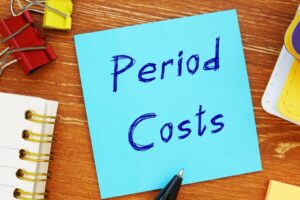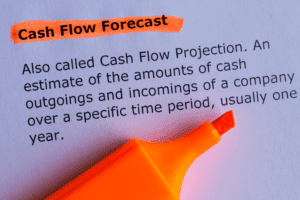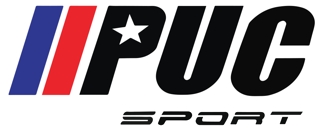
The bankruptcy alternative bypasses the courts to transfer an insolvent company’s assets free of unsecured debt. Some fixed assets’ fair values can be extremely variable, needing revaluations as often as once a year. Revaluations every three to five years are permissible in most other circumstances, according to IFRS. Each of these types is classified as a depreciable asset since its value to the company and capacity to generate income diminishes during the asset’s useful life. Making continual improvements and continuously reviewing the quality of assets is an important part of keeping a company healthy. Improvements should be done on a regular basis or when a scenario necessitates intervention to extend the life of assets and avoid future issues with their capacity to serve a business.
Vehicles
Its accounting definition could be identified in IAS 16 Property, Plant and Equipment. IAS 16 defines them as physical assets that are used to produce revenue or for administrative purposes and are expected to be in use for more than one accounting period. These assets are typically characterized by their substantial size and longevity. They are also subject to depreciation (except land), where their cost is systematically allocated over their useful lives. Plant assets are recorded at their cost and depreciation expense is recorded during their useful lives.
Equipment
This ensures that the value of the asset is accurately represented over its useful life. The company would now adjust the carrying amount to £90,000, and depreciation would be calculated using the revalued amount. If the asset’s value is found to be impaired, the carrying amount would be reduced.
- The company’s top management regularly monitors the plant assets to assess any deviations, discrepancies, or control requirements to avoid misuse of the plant assets and increase the utility.
- In this case, impairment will be computed based on the lower of the recoverable amount and the carrying amount of the plant assets.
- This categorization provides clarity in financial reporting, showing stakeholders the long-term resources a business relies on to maintain and grow its operations.
- Depreciation and amortization, or the process of expensing an item over a longer period of time than when it was acquired, are calculated on a straight-line basis.
- Do take note that freehold land should not be depreciated since they have indefinite useful lives.
What is asset? Definition, Explanation, Types, Classification, Formula, and Measurement
18,000 USD must be charged to the plant asset account for every financial year as a depreciation expense. The assets can be further categorized as tangible, intangible, current, and non-current assets. It includes cash/bank, short-term securities, inventories, account receivables, etc. Companies generally reassess plant asset values annually, especially for impairment purposes, or if significant changes, such as major repairs or updates, occur. Regular reassessment ensures that financial statements reflect the true value of assets.


While they’re most definitely both considered part of the asset category, current assets and plant assets don’t share all that much in common. Next, the business must ensure that it is used for the business purpose and not kept as inventory for selling later on. Thus, for accounting and plant asset disposal, they are recorded at cost, and are depreciated over the estimated useful life, or the actual useful life, whichever is lower. Finally, if required, the business or the asset owner has to book the impairment loss. In that case, the estimated realized value of the asset is less than the actual depreciated cost appearing in the books.

These differences impact how each asset type is managed, valued, and reported in financial statements. Plant assets vary widely across industries, as each sector relies on specific physical assets to support its operations and generate revenue. In manufacturing, plant assets like heavy machinery, assembly lines, and warehouses are essential for producing goods efficiently. In retail, store buildings, shelving, plant assets and point-of-sale equipment play a significant role in customer service and sales. For the transportation and logistics industry, vehicles, warehouses, and loading equipment are critical assets that enable the movement of goods. Similarly, in healthcare, plant assets include medical equipment, diagnostic machines, and specialized facilities that support patient care.
Machinery and equipment include any machines, tools, and devices used in production, manufacturing, or service delivery. These assets are essential in industries like manufacturing, healthcare, and technology, where specialized equipment enables efficient production and service delivery. Machinery and equipment are typically among the highest-depreciating assets due to constant usage, which results in gradual wear and tear. Regular maintenance is often required to extend the life of these assets, and depreciation is calculated to reflect their decreasing value over time.
- The straight-line method’s illustration has been given in the above example.
- Examples range from assembly-line machines in factories to diagnostic equipment in healthcare facilities.
- Knowing how to end a business note or email is an important skill to develop.
- Property, Plant, and Equipment (PP&E) represent the tangible assets utilized by businesses in their daily operations.
- The land is also an asset that is unlikely to deteriorate in value over time.
Examples of Property, Plant, and Equipment
They provide several contributions to a company and understanding how they work can aid in tracking the organization’s growth. Based on the purpose of depreciation mentioned above, depreciation should only commence when the asset is ready for use and is at the location that it is intended to Food Truck Accounting be used. The same process will be repeated every year at the end of the financial year. For the past 52 years, Harold Averkamp (CPA, MBA) hasworked as an accounting supervisor, manager, consultant, university instructor, and innovator in teaching accounting online. For the past 52 years, Harold Averkamp (CPA, MBA) has worked as an accounting supervisor, manager, consultant, university instructor, and innovator in teaching accounting online.
Importance of PP&E in Financial Statements
- Even in technology sectors, plant assets can include server farms, computer hardware, and office spaces that house research and development.
- In actual practice, it is not only difficult but impractical to identify how much of the plant assets have actually been used to produce business revenue.
- Plant assets are long-term fixed assets that are utilized to manufacture or sell a company’s products and services.
- The presentation may pair the line item with accumulated depreciation, which offsets the reported amount of the asset.
Plant assets (other than land) are depreciated over their useful lives and each year’s depreciation is credited to a contra asset account Accumulated Depreciation. Naturally, the initial purchase of the plant asset would be an outflow of cash, any accounting subsequent sales would be a cash inflow. This includes purchase price, shipping costs, installation charges and any other costs directly attributable to bringing the asset to its working condition. A plant asset should be recognized at its costs when it fully meets the definition above by IAS 16. Some entities may also have internal policies that allow them to directly charge out the capital expenditure of a small value, usually below a certain threshold.

